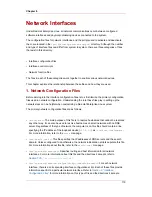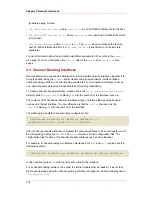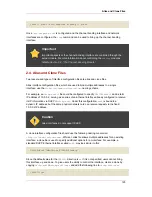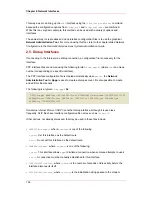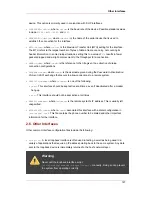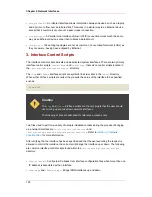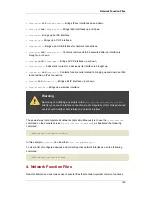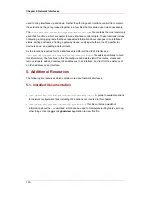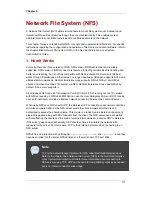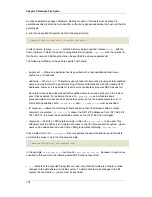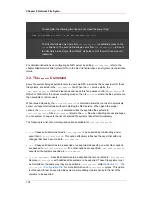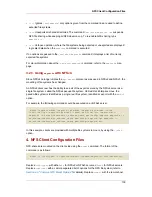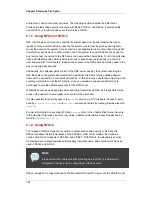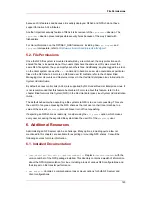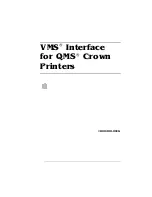
Network File System (NFS)
A Network File System (NFS) allows remote hosts to mount file systems over a network and
interact with those file systems as though they are mounted locally. This enables system
administrators to consolidate resources onto centralized servers on the network.
This chapter focuses on fundamental NFS concepts and supplemental information. For specific
instructions regarding the configuration and operation of NFS server and client software, refer to
the chapter titled Network File System (NFS) in the Red Hat Enterprise Linux System
Administration Guide.
1. How It Works
Currently, there are three versions of NFS. NFS version 2 (NFSv2) is older and is widely
supported. NFS version 3 (NFSv3) has more features, including variable size file handling and
better error reporting, but is not fully compatible with NFSv2 clients. NFS version 4 (NFSv4)
works through firewalls and on the Internet, no longer requires portmapper, supports ACLs, and
utilizes stateful operations. Red Hat Enterprise Linux supports NFSv2, NFSv3, and NFSv4
clients, and when mounting a file system via NFS, Red Hat Enterprise Linux uses NFSv3 by
default, if the server supports it.
All versions of NFS can use Transmission Control Protocol (TCP) running over an IP network,
with NFSv4 requiring it. NFSv2 and NFSv3 can use the User Datagram Protocol (UDP) running
over an IP network to provide a stateless network connection between the client and server.
When using NFSv2 or NFSv3 with UDP, the stateless UDP connection under normal conditions
minimizes network traffic, as the NFS server sends the client a cookie after the client is
authorized to access the shared volume. This cookie is a random value stored on the server's
side and is passed along with RPC requests from the client. The NFS server can be restarted
without affecting the clients and the cookie remains intact. However, because UDP is stateless,
if the server goes down unexpectedly, UDP clients continue to saturate the network with
requests for the server. For this reason, TCP is the preferred protocol when connecting to an
NFS server.
NFSv4 has no interaction with portmapper,
rpc.mountd
,
rpc.lockd
, and
rpc.statd
, since they
have been rolled into the kernel. NFSv4 listens on the well known TCP port 2049.
Note
TCP is the default transport protocol for NFS under Red Hat Enterprise Linux.
Refer to the chapter titled Network File System (NFS) in the Red Hat Enterprise
Linux System Administration Guide for more information about connecting to
NFS servers using TCP. UDP can be used for compatibility purposes as needed,
but is not recommended for wide usage.
Chapter 9.
131
Summary of Contents for ENTERPRISE LINUX 4.5.0 -
Page 1: ...Red Hat Enterprise Linux 4 5 0 4 5 0 Reference Guide ISBN N A Publication date ...
Page 2: ...Red Hat Enterprise Linux 4 5 0 ...
Page 4: ...Red Hat Enterprise Linux 4 5 0 ...
Page 24: ...xxiv ...
Page 26: ......
Page 36: ...12 ...
Page 72: ...48 ...
Page 112: ...88 ...
Page 122: ...98 ...
Page 140: ...116 ...
Page 142: ......
Page 300: ...276 ...
Page 318: ...294 ...
Page 320: ......
Page 332: ...308 ...
Page 350: ...326 ...
Page 378: ...354 ...
Page 388: ...364 ...
Page 394: ...370 ...
Page 395: ...Part IV Appendixes ...
Page 396: ......



